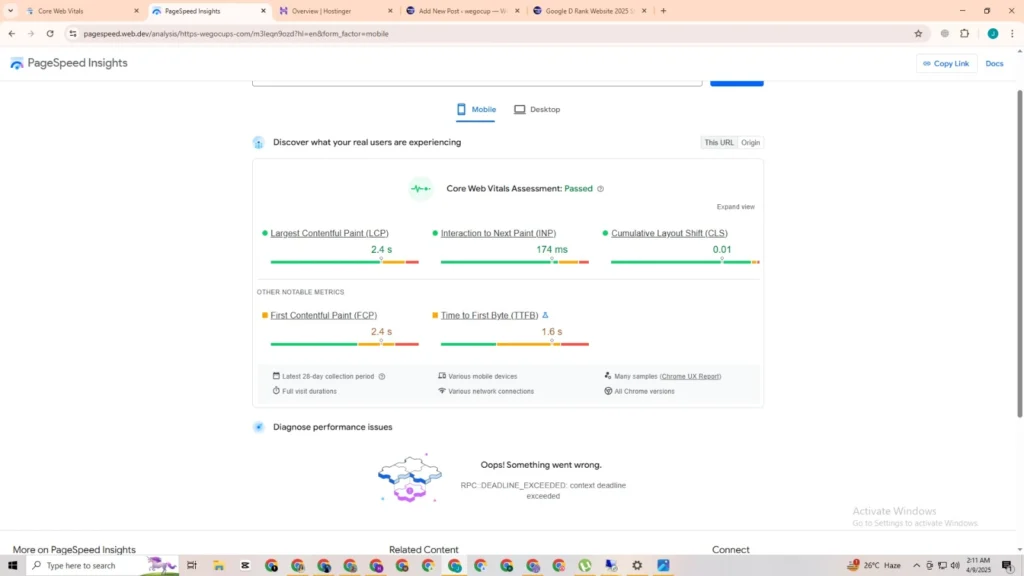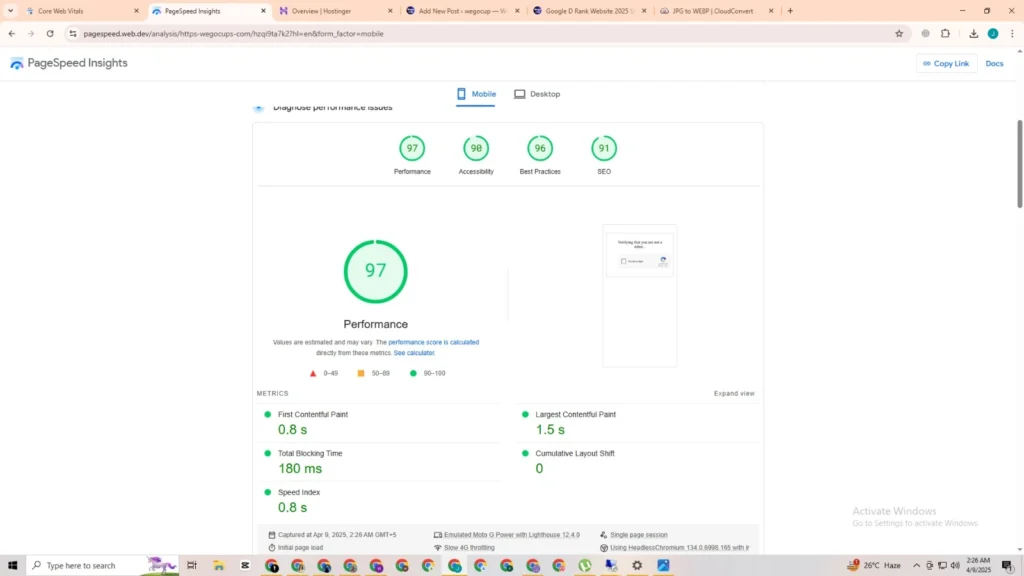Google D Rank Website 2025 Strategies to Recover
Many website owners are worried about their rankings as Google constantly updates its algorithms. In 2025, these changes are expected to have a significant impact on how websites are evaluated. To prevent your site from being penalized or ranked lower, it’s crucial to stay informed about the latest ranking factors and best practices.

I have noticed that several common mistakes can lead to a Google downgrade, such as having poor-quality content, slow loading speeds, and not optimizing for mobile devices. Understanding these issues can help me make the necessary adjustments to avoid being “d-ranked.” By focusing on quality, user experience, and search engine guidelines, I can protect my site’s visibility against unwanted drops in ranking.
The world of SEO is always changing, and keeping up with these trends can be challenging. I believe that by being proactive and adapting my strategies to fit Google’s evolving standards, I can keep my website competitive and relevant in the search results. Learning what to avoid or improve on will give me the edge I need to succeed online.
Overview of Google’s Search Ranking in 2025
I will explore the current landscape of Google’s search ranking system in 2025. Key elements include the evolution of search algorithms, the criteria used for website rankings, and the increasing importance of user experience.

Google’s search algorithms have undergone significant changes over the years. In 2025, the focus is on developing smarter algorithms that understand user intent. This evolution began with simple keyword matching and has progressed to sophisticated machine learning models.
The introduction of updates, like BERT and MUM, allows Google to process content more like a human would. This means that pages are ranked not just based on keywords, but on their overall relevance and quality.
These advancements allow for improved context recognition, enhancing the search experience. I see that websites must adapt to these algorithms to maintain visibility in search results.
Criteria for Website Ranking in 2025
In 2025, Google considers over 200 ranking factors to evaluate websites. A few of the most critical criteria include:
- Quality content: Original, valuable, and relevant content can significantly affect ranking.
- Backlinks: High-quality backlinks from reputable sources enhance credibility.
- On-page SEO: Proper use of meta tags, headers, and keywords helps Google understand page content.
The technical aspects of a website also matter. Fast loading times, mobile optimization, and secure connections (HTTPS) are essential for ranking higher. I notice that websites excelling in these areas tend to perform better in search results.
Importance of User Experience in Ranking
User experience (UX) plays an increasingly vital role in search rankings. In 2025, Google evaluates UX through metrics like page load speed, mobile usability, and bounce rates.
A website that is easy to navigate keeps users engaged longer. If visitors find what they need quickly, they are likely to return, which boosts ranking.
Moreover, features like clear calls to action and readable layouts also enhance user experience. I find that prioritizing UX can lead to better search rankings and increased website traffic.
Analysis of a D-Ranked Website
When examining a D-ranked website, I often notice shared traits that hinder their performance. These factors can be broadly grouped into technical issues and content quality. Understanding these aspects is crucial for anyone looking to improve their site’s ranking.
Common Characteristics of Low-Ranked Websites
Technical problems can significantly affect a website’s ranking. I often identify these key issues:
- Crawl Errors: Sites with broken links or misconfigured robots.txt files can prevent search engines from indexing them properly.
- Security Protocols: Without HTTPS, a site may be marked as insecure. This can drive potential visitors away.
- Improper Use of Tags: Missing or incorrect title tags and meta descriptions can distort how search engines view content.
- Duplicate Content: When a site has the same content on multiple pages, it confuses search engines and can dilute its ranking.
Addressing these technical issues is vital for recovery.
Content Quality and Relevance
The quality and relevance of content is another major player in ranking. Here are some critical points:
- Thin Content: Websites with very little informative text struggle to engage users, leading to higher bounce rates.
- Keyword Stuffing: Overusing keywords can make content feel unnatural and may lead to penalties from Google.
- Outdated Information: I’ve noticed that sites failing to update their content lose credibility. Fresh, relevant information attracts more visitors.
- Lack of Engagement: Content that doesn’t encourage interaction or shareability can miss opportunities for organic growth.
Focusing on creating valuable, relevant content is essential for improving rankings.
SEO Best Practices for Website Improvement
Improving a website’s SEO requires a mix of on-page, off-page, and technical strategies. I focus on these important practices to help boost rankings and increase visibility.
On-Page SEO Strategies
On-page SEO is all about optimizing the content and structure of my website. This includes using relevant keywords in titles, headers, and throughout the text. I make sure to research and select keywords that match what users search for.
I also pay attention to meta tags. Writing clear and engaging meta descriptions helps improve click-through rates. Using header tags (H1, H2, H3) properly allows me to structure the content better for readers and search engines.
Another vital part is keeping content fresh and original. Regular updates show search engines that the site is active. I create high-quality content that answers questions or solves problems, increasing user engagement and time spent on the site.
Off-Page SEO Techniques
Off-page SEO focuses on building my site’s reputation and authority through external sources. One effective method is link building. I seek backlinks from reputable sites in my industry. This adds credibility and can help improve rankings.
I also engage in social media marketing. Sharing content on social platforms increases visibility and encourages sharing. This can lead to more traffic and links back to my site.
Additionally, I monitor my brand mentions across the web. Even if a site doesn’t link back, a mention can enhance my site’s authority. I use tools to track these mentions and respond to feedback, showing that I value user interaction.
Technical SEO Checklist
Technical SEO ensures that search engines can crawl and index my site efficiently. First, I make sure my website is mobile-friendly. A responsive design is critical as more users browse from mobile devices.
Next, I optimize my site’s loading speed. I use tools to analyze performance and identify areas for improvement. A faster site keeps users engaged and encourages them to return.
I also check for broken links and fix them promptly. A healthy site structure improves user experience and helps search engines navigate my content. Finally, submitting a sitemap to search engines simplifies the indexing process and improves visibility.
Impact of Artificial Intelligence on Search Rankings
Artificial Intelligence (AI) significantly changes how search rankings are determined. I will explore the ways AI integrates into search algorithms, the role of machine learning in optimizing websites, and how natural language processing (NLP) affects search results.
AI Integration in Search Algorithms
AI plays a crucial role in refining search algorithms. I have noticed that search engines like Google increasingly use AI to improve user experience.
These algorithms now consider various factors, such as:
- User intent
- Content relevance
- Contextual information
The addition of AI makes it easier for search engines to provide accurate results. This shift means that website owners need to focus on delivering high-quality content that directly addresses user needs.
Machine Learning and Website Optimization
Machine learning (ML) is another powerful aspect of AI that impacts search rankings. I find that ML enables search engines to learn from user interactions and adjust algorithms accordingly.
This process helps identify patterns that can enhance ranking factors. Key areas affected include:
- Click-through rates (CTR)
- Bounce rates
- User engagement metrics
To adapt, I suggest focusing on enhancing user experience, optimizing site speed, and ensuring mobile-friendliness. Websites that successfully leverage these aspects may see improved rankings.
The Role of Natural Language Processing
Natural Language Processing (NLP) is essential for understanding and processing human language. In my experience, NLP allows search engines to interpret search queries more accurately. This leads to results that are aligned with user intent.
NLP affects search rankings by:
- Analyzing the structure of queries
- Understanding synonyms and context
- Identifying key phrases
As NLP continues to evolve, it’s vital for content creators to focus on creating clear, concise, and contextually relevant content. This approach will help ensure content ranks well.
Case Studies of Recovered D-Ranked Websites
I have examined various websites that faced significant ranking drops and the strategies they used to recover. These case studies highlight specific methods employed by site owners and the data they analyzed to measure success.
Turnaround Strategies Employed
In my research, one notable case involved a financial services website that experienced a drop due to negative SEO attacks. The owner implemented a multi-step recovery plan. First, they conducted a thorough backlink audit. This audit helped identify harmful links, which were then disavowed.
Next, they updated the website’s content to make it more relevant and engaging. They focused on user experience by improving site speed and ensuring mobile-friendliness. Additionally, they optimized on-page SEO elements like meta tags and headings.
This comprehensive approach led to a gradual recovery in rankings.
Success Metrics and Analytics
After implementing the turnaround strategies, this website tracked several key performance indicators (KPIs). Organic traffic showed an increase of about 50% within three months. Furthermore, the bounce rate decreased, indicating improved user engagement.
They also monitored keyword rankings using tools like Google Search Console. This provided valuable insights into which changes were most effective. By reviewing click-through rates (CTR) for various pages, the owner could identify high-performing content.
Overall, these metrics demonstrated that the implemented strategies effectively reversed the drop in rankings, restoring authority and visibility for the website.
Emerging Trends in SEO and Web Ranking
I see significant shifts happening in SEO and web ranking strategies. These changes are driven by evolving technology and user behavior. Two key trends I observe are the rise of voice search optimization and the importance of mobile-first indexing.
Voice Search Optimization
Voice search is transforming how people find information online. I notice more users relying on voice-activated devices. This shift means that websites must adapt to how questions are asked verbally.
To optimize for voice search, I focus on natural language and long-tail keywords. This approach aligns with how people speak instead of type. For example, instead of “best pizza near me,” a voice search might be “where can I find the best pizza around here?”
I also emphasize the importance of featured snippets. These are concise answers that can appear at the top of search results. I optimize my content to directly answer common questions, increasing the chances of being featured.
Mobile-First Indexing and Its Impact
Mobile-first indexing means Google predominantly uses the mobile version of a site for ranking. I understand that this trend reflects user behavior, as many access the web via smartphones.
To stay competitive, I ensure my websites are responsive and load quickly on mobile devices. Page speed is crucial; I aim for loading times under three seconds. Additionally, I consider the layout and user experience. Clear navigation and easy-to-read content are key to retaining mobile users.
I also monitor my mobile traffic analytics. This allows me to make informed adjustments based on user engagement. Keeping current with these mobile trends is essential for maintaining visibility in search rankings.
Conclusion
I see that Google’s ranking system is evolving rapidly in 2025. As I dive into the factors affecting rankings, it becomes clear that I must adapt my strategies.
Key Factors to Consider:
- Page Loading Speed: I know that fast websites perform better. A slow site can drop my rankings significantly, so optimizing speed is crucial.
- Content Quality: I must focus on creating engaging and useful content. High-quality content increases my chances of ranking well.
- Website Structure: A well-organized site with good design and security is essential. I understand that structure affects user experience and can impact my rankings.
- Backlink Profile: I need to build a strong network of backlinks. Credible links can enhance my site’s authority and search visibility.
Keeping these factors in mind, I can work on my site’s ranking strategy. As I continue monitoring trends and updates in SEO, I will ensure my approach remains effective. Adapting to these changes is vital for maintaining a strong online presence.
